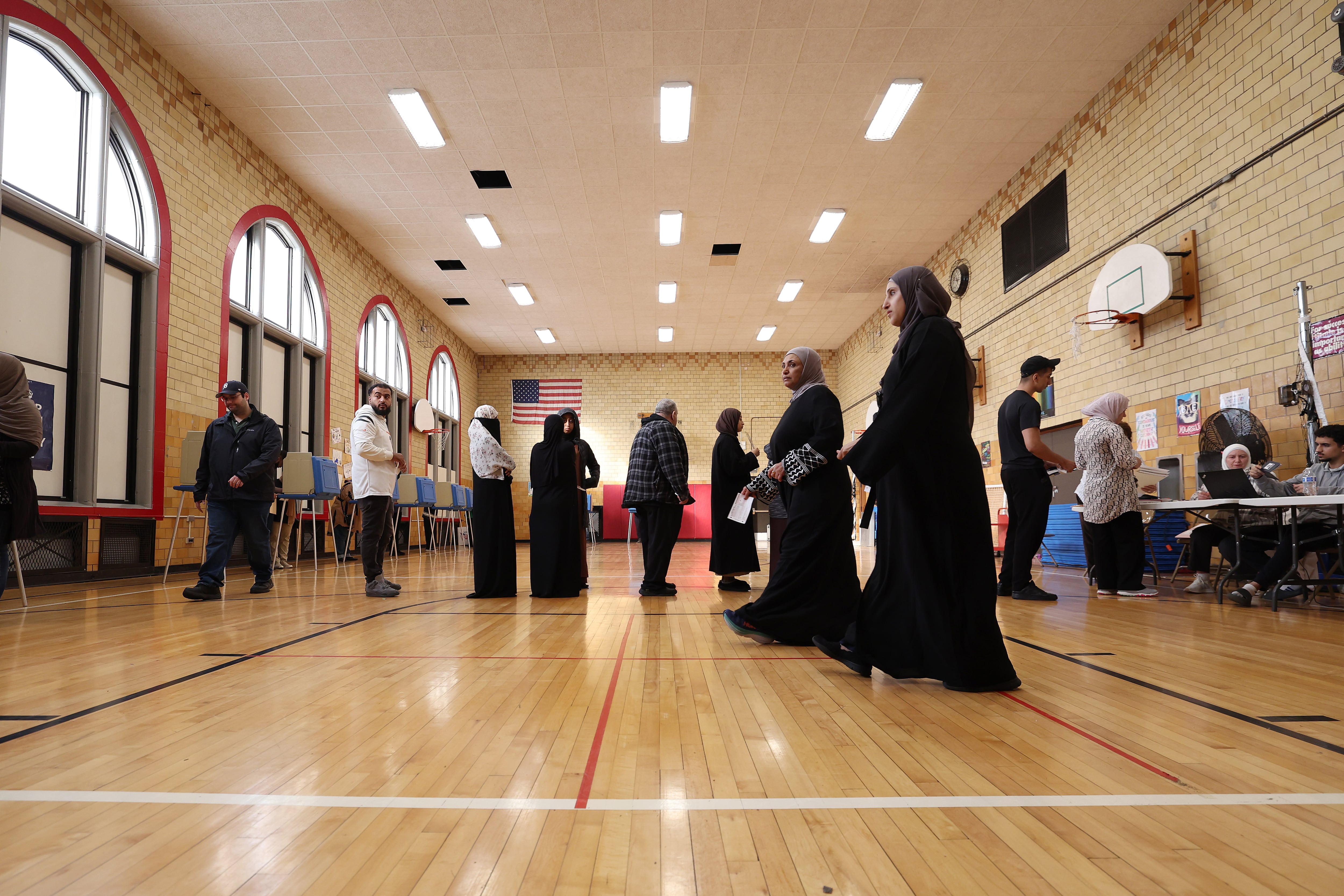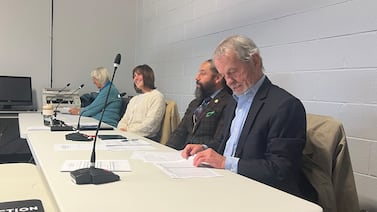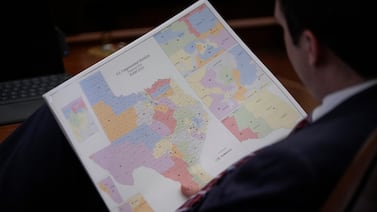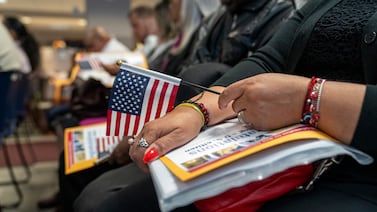Votebeat is a nonprofit news organization reporting on voting access and election administration across the U.S. Sign up for Votebeat Michigan’s free newsletter here.
Voters in Dearborn, Michigan, will select their mayor, their clerk and all seven members of the City Council this November — and they will also get a say on whether to revamp the city charter to add two council seats and divide the city into wards for the first time.
The ballot measure is the result of a major effort by activists and election officials in Dearborn, a city of more than 100,000 people just west of Detroit. Voter approval of the measure would help fix what organizers say is a longstanding problem: unequal representation of the city’s residents.
A ward is a designated geographic area all represented by the same council member, who lives in that district and is voted on by the members within that ward. The most common alternative — and what Dearborn has now — is at-large representation, where the entire city selects all council members without regard to where they live. That method has led to years of unbalanced distribution of council members in Dearborn organizers say. Local advocates have tried in the past to fix the issue, but this would be the first time the question comes directly before voters.
Voters in Detroit overwhelmingly approved a similar referendum in 2009 to switch from at-large representation on their City Council to a mostly district-based system, to address similar concerns about whether neighborhoods had sufficient representation. Since 2013, Detroit has seven districts and just two at-large seats. Several of the state’s other largest cities, including Grand Rapids and Warren, also have wards for their legislative bodies.
The Dearborn ballot measure comes from local activist group Dearborn Wants Wards, whose name says it all: In a city of more than 100,000, organizers want their representatives to come from all parts of the city. The alternative, members of the organization say, is that political power is concentrated with people from the wealthier western part of the city, where six of the seven current council members come from. The southern and eastern portions of the city are highly industrialized, whereas the western part tends to have larger homes, nicer parks, and other amenities.
“There are big disparities in different parts of the city,” Wahbeh Nuseibeh, an east side resident who is operational data lead for Dearborn Wants Wards. In his part of the city, flooding is a constant worry — even a light storm can send water into basements, while in the south end, industrial pollution leads to high rates of serious health problems like cancer and lung diseases.
Those issues just don’t exist in the same way on the west side, Nuseibeh said.
The initiative doesn’t specify where the ward lines would be; that would be up to a redistricting commission. But organizers say they want three wards on the west end, three on the east end and one that encompasses both the east and south ends of the city. Changes would take effect in 2029.
Getting the measure on the ballot was not easy. To put an issue on the ballot, the city requires signatures on petitions from 5% of its more than 77,000 registered voters, or more than 3,850 signatures. Dearborn Wants Wards organizers first submitted more than 6,200 signatures, but 2,800 of those were rejected.
That left them a few hundred signatures short. Organizers attributed that largely to an error by the clerk’s office in misidentifying signatures as duplicates. “In Muslim and Arab communities such as ours, it’s common for names with similar spellings to be falsely tagged as duplicates,” Mona Mawari, lead organizer for the campaign, said in a July statement.
George Darany, the city clerk, said city employees spent more than 500 total hours working to verify every signature, putting other projects on hold to try to get organizers an answer quickly.
“It was tough to hear that they thought we perhaps were not doing our jobs properly,” he said of Mawari’s group, “but we knew we were, and we were confident in it.”
Organizers eventually submitted nearly 1,800 additional signatures, enough to clear the threshold. Darany’s office then submitted the filings to the governor’s office for approval, as required for any change to a city charter. On Monday, organizers confirmed the city would put the question on the ballot.
For Nuseibeh, it’s the first step toward making council members accountable to Dearborn’s many neighborhoods.
As clerk, Darany said he would stay neutral on the ballot question itself. But he told Votebeat that he values that the process gives voters a stronger voice, rather than leaving decisions solely to the clerk or city government.
“If Dearborn residents want the change, we’ll implement it,” Darany said.
Dearborn Wants Wards “should be commended for the work that they did, because it was a huge job” to gather signatures, he said. “This is democracy at work right there.”
Hayley Harding is a reporter for Votebeat based in Michigan. Contact Hayley at hharding@votebeat.org.





